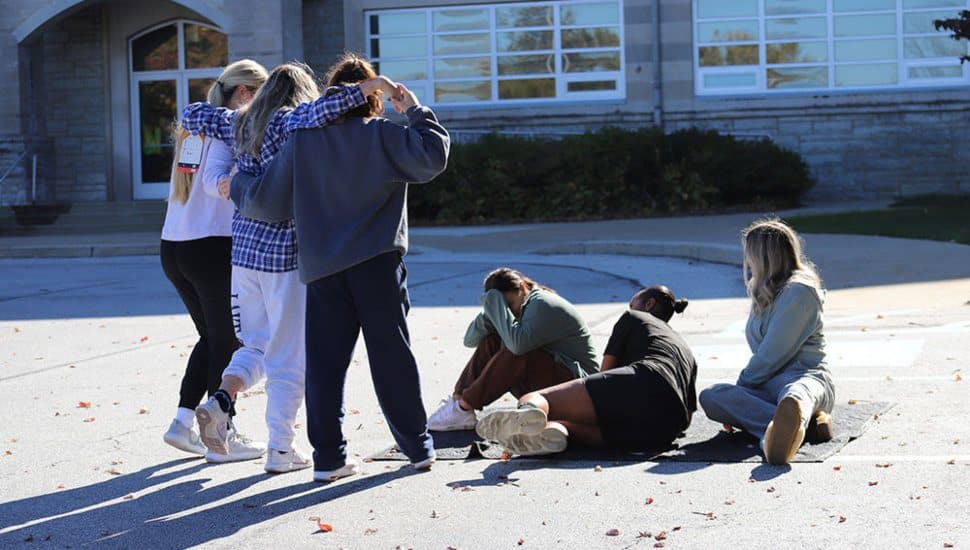Immaculata students participate in mass casualty simulation to practice life saving skills
Image via Immaculata University.
Immaculata students at the mass sacrifice simulation event.

As demonstrated in a mass casualty simulation event at Immaculata University on Oct. 18, when a disaster strikes, first responders—whether seasoned paramedics or inquisitive nursing and physical education students—put aside fear and begin to act to save lives.
The simulated accident scene, staged as a four-car collision with multiple victims, helped Immaculata students practice their life-saving skills in a realistic mess.
Seventeen students had been assigned to play various clinical conditions and injuries while three Master of Athletic Training students and two Bachelor of Science in Nursing students served as first responders and 30 other BSN students worked in emergency rooms.
“I wanted them to be able to triage patients appropriately during a disaster simulation and provide care based on that level of triage and the patient’s needs,” said Suzanne Wurster, assistant professor of nursing.
She and Michele Monaco, professor of exercise science, as well as other nursing and sports training faculties worked together to design and run the mass-casualty simulation.
“The ability to quickly identify life-threatening injuries and treat them appropriately provides life-saving treatment,” Monaco said. Because a sham patient had an open fracture of the femur with profuse arterial bleeding, “our students were able to determine that this injury takes precedence and quickly apply a tourniquet to stop the bleeding.”
Students used a color system and tags to categorize the urgency of dummy patients’ needs—green for patients with minor ailments; yellow for patients with serious injuries who could still breathe and speak; red for patients who required immediate treatment for serious problems such as loss of consciousness, shortness of breath or neurological symptoms; and black for victims who did not survive the accident.
“Our students were able to identify the injuries with very little prompting,” Monaco said. “They were able to identify head injuries, fractures, dislocations, disorientation and various types of bleeding.”
First Responder students brought mock patients with stretchers and wheelchairs into Immaculata’s simulation labs, each with a specific triage color, where nursing majors checked patients’ tags and administered treatment. Nine members of the nursing faculty served as physicians and shared with the students simulated vital signs and test results of sham patients and invited them to make decisions based on their observations and the clinical data obtained.
After the simulation was over, the nursing faculty and members of the EMS team consulted with the students in a nursing leadership class. Matt Cole, EMS Captain, congratulated the students on a great job amidst the chaos. Since some dummy patients died as part of the simulation, he reassured the students that it’s okay to grieve over the loss of people. “Ask for help when you need it,” he said. “It’s not a shame. Mental health is important.”
Immaculata offers a variety of healthcare programs that equip students with the knowledge and skills to provide holistic, patient-centric, evidence-based care. Immaculata’s nursing students consistently achieve high pass rates for the nursing license exam, with 90.48 percent of students passing the exam on the first attempt in the 2021-22 school year. Immaculata’s first class of Master of Athletic Training students will graduate this spring and upon completion of coursework and six clinical training experiences will take their athletic training certification exam to learn how to prevent, diagnose and treat various musculoskeletal and medical conditions.
Learn more about Immaculata University.


Comments are closed.